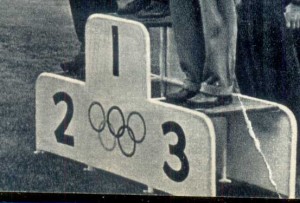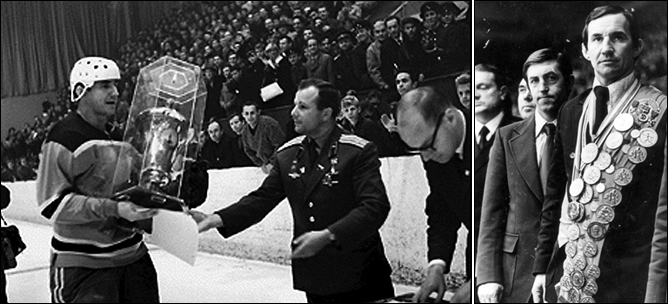Тихоненко, Валерий Алексеевич. Тихоненко валерий
Тихоненко, Валерий Алексеевич — Википедия (с комментариями)
Материал из Википедии — свободной энциклопедии
В Википедии есть статьи о других людях с фамилией Тихоненко.| Валерий Алексеевич Тихоненко | |
| 250px | |
| Тяжёлый форвард | |
| Ошибка Lua в Модуль:Wikidata на строке 170: attempt to index field 'wikibase' (a nil value). | |
| 207 см | |
| Ошибка Lua в Модуль:Wikidata на строке 170: attempt to index field 'wikibase' (a nil value). | |
| Россия22x20px Россия | |
| 19 августа 1964(1964-08-19) (54 года) | |
| Ангрен, Узбекская ССР, СССР | |
| Ошибка Lua в Модуль:Wikidata на строке 170: attempt to index field 'wikibase' (a nil value). | |
| Ошибка Lua в Модуль:Wikidata на строке 170: attempt to index field 'wikibase' (a nil value). | |
| Ошибка Lua в Модуль:Wikidata на строке 170: attempt to index field 'wikibase' (a nil value). | |
| Ошибка Lua в Модуль:Wikidata на строке 170: attempt to index field 'wikibase' (a nil value). | |
| 157-й (7-й раунд), 1986, Атланта Хокс | |
Вале́рий Алексе́евич Тихоне́нко (род. 19 августа 1964, Ангрен, Узбекская ССР, СССР) — советский российский баскетболист. Рост — 207 см. Играл на позиции тяжелого форварда. Заслуженный мастер спорта СССР (1988). Окончил Казахстанский институт физической культуры. В 1986 году был выбран на драфте «Атланта Хокс» (НБА) в седьмом раунде 18 пик. С 2011 года - генеральный менеджер казахстанского баскетбольного клуба «Астана».
Биография
Валерий Алексеевич Тихоненко родился 19 августа 1964 года в городе Ангрен Узбекской ССР. Первые шаги в баскетболе он провел под руководством Сергея Зозулина.
Валерий Тихоненко практически одновременно начал выступать за ЦСКА и Сборную СССР по баскетболу. В 1988 году стал играть за СКА (Алма-Ата). В период с 1990 по 1993 годы последовали выступления за испанскии клубы. В 1993 году Валерий Тихоненко выступал за «Спартак» (Москва). Затем последовали сезоны за ЦСК ВВС (Самара) и Арсенал (Тула). В 1997 году Валерий Тихоненко вернулся в ЦСКА. В 2000 году он завершил карьеру игрока.
В 2000—2002 годах был главным тренером команды ЦСКА. Затем Валерий Тихоненко стажировался в команде университета «Сент-Джозефс» и в клубе НБА «Даллас Маверикс». С 2004 года тренер, главный тренер «Динамо» (Москва), с которым стал серебряным призёром чемпионата России (2005). Зимой 2005/2006 годов Валерий Тихоненко стал главным тренером ЦСК ВВС (Сама
o-ili-v.ru
| Валерий Алексеевич Тихоненко | ||||||||||||||||
| Тяжёлый форвард | ||||||||||||||||
| Россия Россия | ||||||||||||||||
| 19 августа 1964(1964-08-19) (54 года) | ||||||||||||||||
| Ангрен, Узбекская ССР, СССР | ||||||||||||||||
| 157-й (7-й раунд), 1986, Атланта Хокс | ||||||||||||||||
| ||||||||||||||||
ru-wiki.ru
Тихоненко, Валерий Алексеевич - WikiVisually
1. Тяжёлый форвард – The power forward, also known as the four, is one of the five positions in a regulation basketball game. It has also referred to as the post position. Power forwards play a similar to that of center in what is called the post or low blocks. They typically play offensively with their backs towards the basket and position themselves defensively under the basket in a defense or against the opposing power forward in man-to-man defense. The power forward position entails a variety of responsibilities, one of which is rebounding, many power forwards are noted for their mid-range jump-shot, and several players have become very accurate from 12 to 18 feet. Earlier, these skills were more typically exhibited in the European style of play, some power forwards, known as stretch fours, have since extended their shooting range to three-point field goals. In the NBA, power forwards usually range from 68 to 611, despite the averages, a variety of players fit tweener roles which finds them in the small forward and/or center position depending upon matchups and coaching decisions. Some natural power forwards often play the position and have the skills
2. Казахстан – Kazakhstan, officially the Republic of Kazakhstan, is a transcontinental country in northern Central Asia and Eastern Europe. Kazakhstan is the worlds largest landlocked country, and the ninth largest in the world, Kazakhstan is the dominant nation of Central Asia economically, generating 60% of the regions GDP, primarily through its oil/gas industry. It also has vast mineral resources, Kazakhstan is officially a democratic, secular, unitary, constitutional republic with a diverse cultural heritage. Kazakhstan shares borders with Russia, China, Kyrgyzstan, Uzbekistan, and Turkmenistan, the terrain of Kazakhstan includes flatlands, steppe, taiga, rock canyons, hills, deltas, snow-capped mountains, and deserts. Kazakhstan has an estimated 18 million people as of 2014, Given its large area, its population density is among the lowest. The capital is Astana, where it was moved in 1997 from Almaty, the territory of Kazakhstan has historically been inhabited by nomadic tribes. This changed in the 13th century, when Genghis Khan occupied the country as part of the Mongolian Empire, following internal struggles among the conquerors, power eventually reverted to the nomads. By the 16th century, the Kazakh emerged as a distinct group, the Russians began advancing into the Kazakh steppe in the 18th century, and by the mid-19th century, they nominally ruled all of Kazakhstan as part of the Russian Empire. Following the 1917 Russian Revolution, and subsequent civil war, the territory of Kazakhstan was reorganised several times, in 1936, it was made the Kazakh Soviet Socialist Republic, part of the Soviet Union. Kazakhstan was the last of the Soviet republics to declare independence during the dissolution of the Soviet Union in 1991, Kazakhstan has worked to develop its economy, especially its dominant hydrocarbon industry. Kazakhstans 131 ethnicities include Kazakhs, Russians, Uzbeks, Ukrainians, Germans, Tatars, the Kazakh language is the state language, and Russian has equal official status for all levels of administrative and institutional purposes. The name Kazakh comes from the ancient Turkic word qaz, to wander, the name Cossack is of the same origin. The Persian suffix -stan means land or place of, so Kazakhstan can be translated as land of the wanderers. Kazakhstan has been inhabited since the Neolithic Age, the regions climate, archaeologists believe that humans first domesticated the horse in the regions vast steppes. Central Asia was originally inhabited by the Scythians, the Cuman entered the steppes of modern-day Kazakhstan around the early 11th century, where they later joined with the Kipchak and established the vast Cuman-Kipchak confederation. Under the Mongol Empire, the largest in history, administrative districts were established. These eventually came under the rule of the emergent Kazakh Khanate, throughout this period, traditional nomadic life and a livestock-based economy continued to dominate the steppe. Nevertheless, the region was the focus of ever-increasing disputes between the native Kazakh emirs and the neighbouring Persian-speaking peoples to the south, at its height the Khanate would rule parts of Central Asia and control Cumania
3. Россия – Russia, also officially the Russian Federation, is a country in Eurasia. The European western part of the country is more populated and urbanised than the eastern. Russias capital Moscow is one of the largest cities in the world, other urban centers include Saint Petersburg, Novosibirsk, Yekaterinburg, Nizhny Novgorod. Extending across the entirety of Northern Asia and much of Eastern Europe, Russia spans eleven time zones and incorporates a range of environments. It shares maritime borders with Japan by the Sea of Okhotsk, the East Slavs emerged as a recognizable group in Europe between the 3rd and 8th centuries AD. Founded and ruled by a Varangian warrior elite and their descendants, in 988 it adopted Orthodox Christianity from the Byzantine Empire, beginning the synthesis of Byzantine and Slavic cultures that defined Russian culture for the next millennium. Rus ultimately disintegrated into a number of states, most of the Rus lands were overrun by the Mongol invasion. The Soviet Union played a role in the Allied victory in World War II. The Soviet era saw some of the most significant technological achievements of the 20th century, including the worlds first human-made satellite and the launching of the first humans in space. By the end of 1990, the Soviet Union had the second largest economy, largest standing military in the world. It is governed as a federal semi-presidential republic, the Russian economy ranks as the twelfth largest by nominal GDP and sixth largest by purchasing power parity in 2015. Russias extensive mineral and energy resources are the largest such reserves in the world, making it one of the producers of oil. The country is one of the five recognized nuclear weapons states and possesses the largest stockpile of weapons of mass destruction, Russia is a great power as well as a regional power and has been characterised as a potential superpower. The name Russia is derived from Rus, a state populated mostly by the East Slavs. However, this name became more prominent in the later history, and the country typically was called by its inhabitants Русская Земля. In order to distinguish this state from other states derived from it, it is denoted as Kievan Rus by modern historiography, an old Latin version of the name Rus was Ruthenia, mostly applied to the western and southern regions of Rus that were adjacent to Catholic Europe. The current name of the country, Россия, comes from the Byzantine Greek designation of the Kievan Rus, the standard way to refer to citizens of Russia is Russians in English and rossiyane in Russian. There are two Russian words which are translated into English as Russians
4. Ангрен (город) – Angren is a city in eastern Uzbekistan. The city is located on the Angren River 70 mi to the east of Tashkent, the City of Angren was created in 1946 from the villages of Jigariston, Jartepa, Teshiktosh, and Qoʻyxona which had emerged in the rich Angren coal basin during World War II. There were several coal mines and factories in Angren during Soviet times. Following the collapse of the USSR, the majority of factories were abandoned. A lack of professionals and machinery, mismanagement, and falling income levels — all contributed to this downfall, while Angren was once an important industrial center, nowadays it gives the impression of an abandoned city and is often referred to as a ghost town. Still, Angren has retained some of its industrial importance, the city is home to a once considerable and still functioning coal mining industry. It also has a large industry, a rubber processing plant. The current name of the city is a Russification of the Persian word ohangaron which means blacksmiths, in 1936, first geological explorations were carried out in the Angren Valley. In 1940, the first coal mine was built in the area, in 1941, Angren and Tashkent were connected with a railway line. During World War II, several settlements, namely, the villages of Jigariston, Jartepa, Teshiktosh, on June 13,1946, the Supreme Soviet of the Uzbek SSR issued a decree to create the City of Angren from these settlements. In his book The Gulag Archipelago, Aleksandr Solzhenitsyn mentioned Angren as one of the Soviet towns that grew up next to a labor camp. Later it turned out that most of the city had been built above coal seams, therefore, in 1956 Angren was moved to a different area 7–8 km to the south-west of its original location. Angren was an important industrial city in the Soviet Union, after the dissolution of the USSR, the majority of ethnic Russians and Tatars living in Angren left the city. There were many experienced workers among those who left, in the 1990s, almost all of the factories in the city were closed down as a result of a lack professionals, disruption of Soviet trade routes, ageing machinery, and mismanagement. Nowadays Angren is often referred to as a ghost town, Angren is located on the Angren River 70 mi to the east of Tashkent. On the north-west of Angren is the Chatkal Range, on the south and south west of the city is the Kurama Range. The mountains that surround Angren rise up to 2, 500–3,500 m above sea level, Angren has a continental climate with cold winters and hot summers. The average July temperature is 27 °C, the mean temperature in January is −2 °C
wikivisually.com



